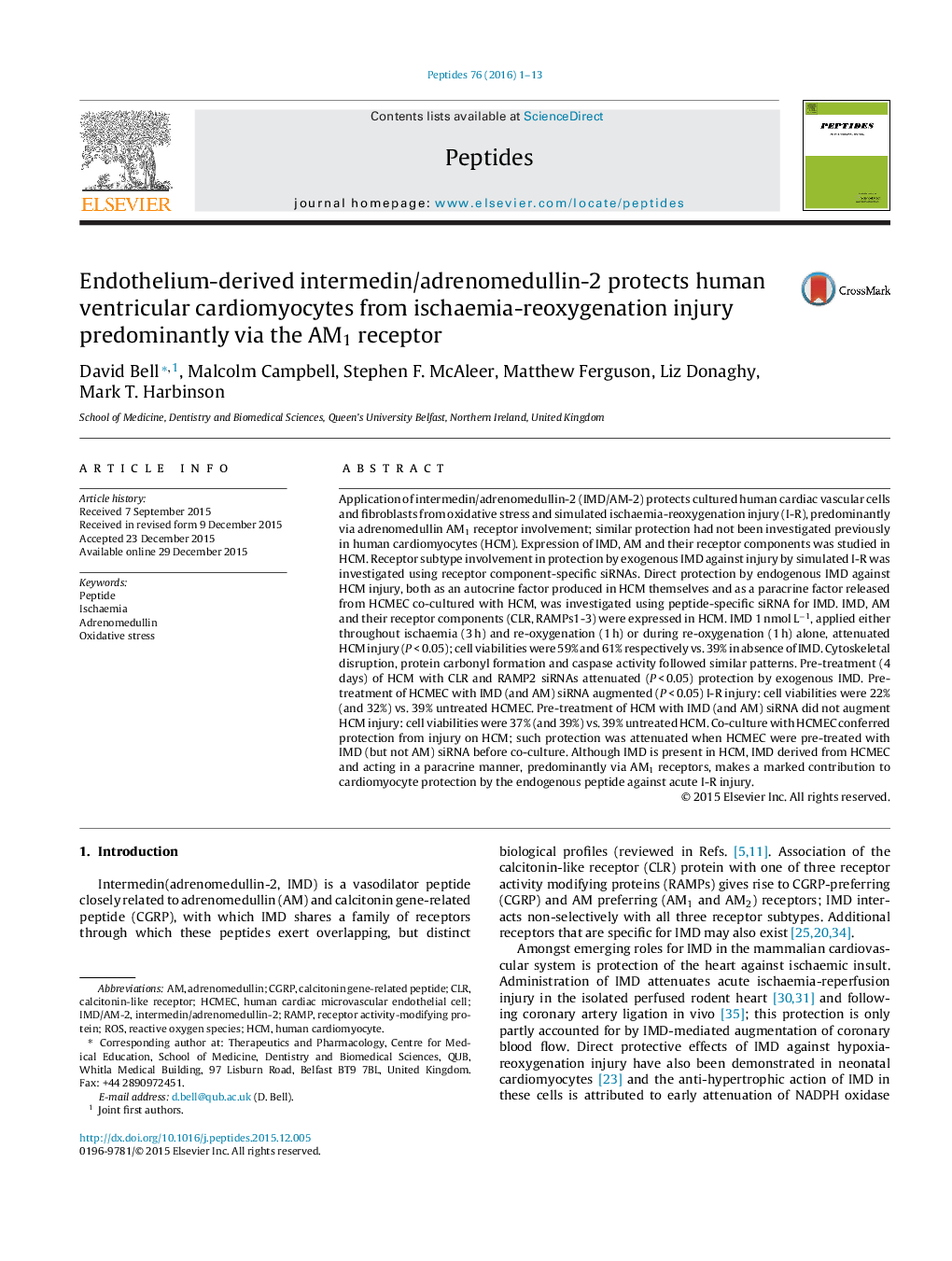| کد مقاله | کد نشریه | سال انتشار | مقاله انگلیسی | نسخه تمام متن |
|---|---|---|---|---|
| 2005905 | 1541703 | 2016 | 13 صفحه PDF | دانلود رایگان |
عنوان انگلیسی مقاله ISI
Endothelium-derived intermedin/adrenomedullin-2 protects human ventricular cardiomyocytes from ischaemia-reoxygenation injury predominantly via the AM1 receptor
دانلود مقاله + سفارش ترجمه
دانلود مقاله ISI انگلیسی
رایگان برای ایرانیان
کلمات کلیدی
CGRPCLRHCMROS - ROSadrenomedullin - آدرنومدولینIschaemia - ایسکمیOxidative stress - تنش اکسیداتیوramp - رمپReceptor activity-modifying protein - پروتئین تغییر دهنده فعالیت گیرندهPeptide - پپتید calcitonin gene-related peptide - پپتید مرتبط با ژن کلسی تونینReactive oxygen species - گونههای فعال اکسیژنCalcitonin-like receptor - گیرنده کلسیتونین مانند
موضوعات مرتبط
علوم زیستی و بیوفناوری
بیوشیمی، ژنتیک و زیست شناسی مولکولی
زیست شیمی
پیش نمایش صفحه اول مقاله

چکیده انگلیسی
Application of intermedin/adrenomedullin-2 (IMD/AM-2) protects cultured human cardiac vascular cells and fibroblasts from oxidative stress and simulated ischaemia-reoxygenation injury (I-R), predominantly via adrenomedullin AM1 receptor involvement; similar protection had not been investigated previously in human cardiomyocytes (HCM). Expression of IMD, AM and their receptor components was studied in HCM. Receptor subtype involvement in protection by exogenous IMD against injury by simulated I-R was investigated using receptor component-specific siRNAs. Direct protection by endogenous IMD against HCM injury, both as an autocrine factor produced in HCM themselves and as a paracrine factor released from HCMEC co-cultured with HCM, was investigated using peptide-specific siRNA for IMD. IMD, AM and their receptor components (CLR, RAMPs1-3) were expressed in HCM. IMD 1 nmol Lâ1, applied either throughout ischaemia (3 h) and re-oxygenation (1 h) or during re-oxygenation (1 h) alone, attenuated HCM injury (P < 0.05); cell viabilities were 59% and 61% respectively vs. 39% in absence of IMD. Cytoskeletal disruption, protein carbonyl formation and caspase activity followed similar patterns. Pre-treatment (4 days) of HCM with CLR and RAMP2 siRNAs attenuated (P < 0.05) protection by exogenous IMD. Pre-treatment of HCMEC with IMD (and AM) siRNA augmented (P < 0.05) I-R injury: cell viabilities were 22% (and 32%) vs. 39% untreated HCMEC. Pre-treatment of HCM with IMD (and AM) siRNA did not augment HCM injury: cell viabilities were 37% (and 39%) vs. 39% untreated HCM. Co-culture with HCMEC conferred protection from injury on HCM; such protection was attenuated when HCMEC were pre-treated with IMD (but not AM) siRNA before co-culture. Although IMD is present in HCM, IMD derived from HCMEC and acting in a paracrine manner, predominantly via AM1 receptors, makes a marked contribution to cardiomyocyte protection by the endogenous peptide against acute I-R injury.
ناشر
Database: Elsevier - ScienceDirect (ساینس دایرکت)
Journal: Peptides - Volume 76, February 2016, Pages 1-13
Journal: Peptides - Volume 76, February 2016, Pages 1-13
نویسندگان
David Bell, Malcolm Campbell, Stephen F. McAleer, Matthew Ferguson, Liz Donaghy, Mark T. Harbinson,